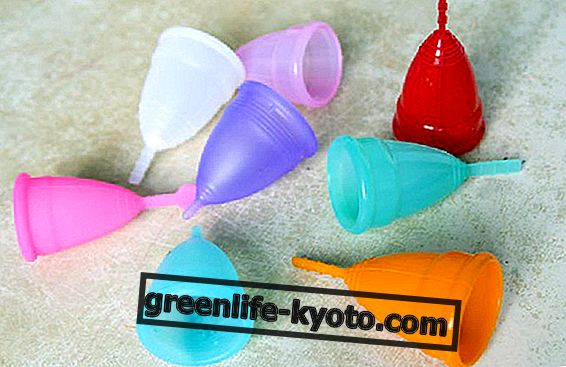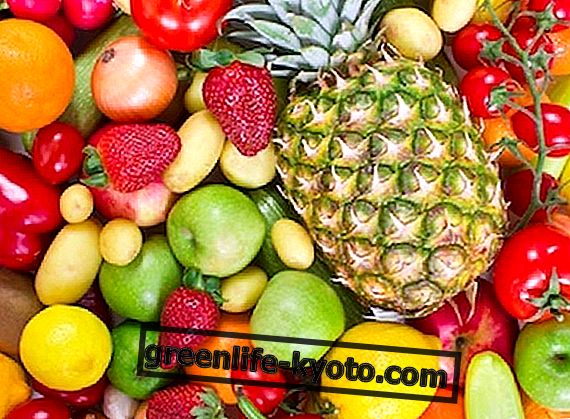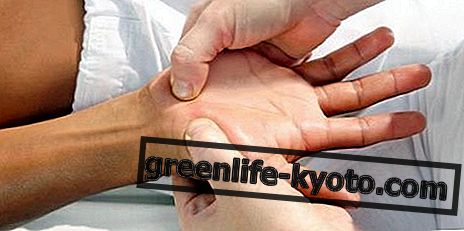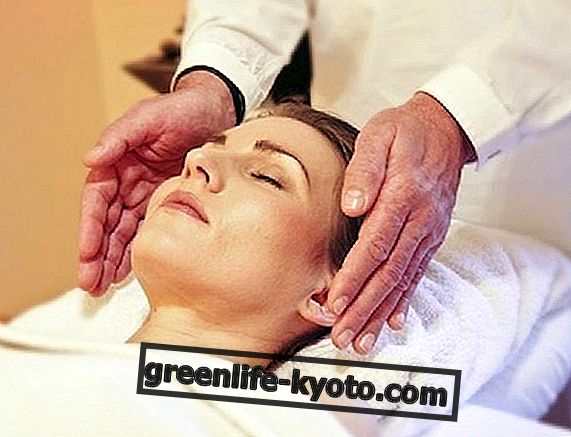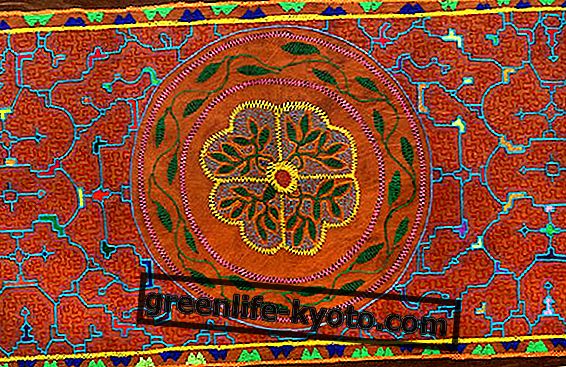Rheumatism is osteoarticular and connective tissue diseases of different nature. Often generated by multiple concomitant causes, they can also be inherited. Let's find out better how to treat them.
Difference between healthy joint and joint affected by rheumatoid arthritis

Types of rheumatism
Usually the diagnosis of rheumatism takes into account the classification method of rheumatic diseases proposed by SIR ( Italian Society of Rheumatology ).
There are 13 groups in which the rheumatism that is diagnosed as osteoarticular and connective tissue diseases is divided: arthrosis (osteoarthritis), primary arthritis, microcrystal arthropathies and dysmetabolic disorders, non-traumatic pains of the spine, bone diseases, connective tissue diseases and vasculitis (systemic rheumatic diseases), arthritis caused by infectious agents, extra-articular rheumatism, neurological, neurovascular and psychic syndromes, congenital connective diseases, neoplasms and related syndromes, other diseases that appear as possible rheumatological manifestations.
The thirteenth group is indicated as a miscellany of quite rare pathologies related to rheumatism, such as congenital multiple arthrogryposis, family camptodactyly, coccygodynia, the rigid man's syndrome, Parsonage-Turner syndrome, Tietze's syndrome (a form of costochondritis), Jaccoud's fibrous rheumatism and gardenal rheumatism (barbiturate-reflected algodystrophy).
To simplify and better orientate, the diagnosis is often based on the distinction in the three macro-categories into which the disorder is divided:
- Inflammatory rheumatism;
- Degenerative rheumatism;
- Extra-articular rheumatism.
Generally, in allopathic medicine, to treat rheumatism, symptomatic drugs are used (ie those drugs that act on symptoms, but are not able to change the course of the disease) and specific drugs (or drugs that act on the pathogenetic mechanisms of the disease and that can slow down both the progression and the extent of the damage).
In case of acute joint rheumatism the minimum blood tests to be performed for the investigation are blood count, ESR, TAS, reactive C protein.
Symptoms
Rheumatic diseases are recognizable through some common symptoms. From pain and swelling in the joints of the hands and wrists to prolonged joint stiffness for over an hour in the morning. And again: whitening of the fingers and feelings of dryness or sand in the eyes, associated with dry mouth and joint or muscle pain.
The range of symptoms that accompany the appearance of rheumatism is really wide. As regards the locomotor apparatus, the subject manifests the pain and the diminished functional capacity of the joint involved.
Other symptoms common to various rheumatic diseases are fever, tiredness and the feeling of general malaise, asthenia and weight loss. Among the factors favoring the symptomatology there are, for example, estrogens ; this explains why inflammatory rheumatism is much more frequent in female subjects.
Causes of rheumatism
Rheumatism is mainly caused by inflammation of the bones and joints. The causes of these inflammations are many and can be linked to unhealthy lifestyles :
- Overweight
- Incorrect nutrition (abuse of white bread and refined sugar)
- Poor physical activity and sedentary life
- Bad postures
In other cases, however, rheumatism depends on
- Metabolic alterations
- Hereditary factors
- Bioflavonoid deficiency
- Pre-existing infections (affecting the teeth, gall bladder and tonsils)
The most common ailments and natural remedies for having healthy teeth

Diagnosis
To make a preliminary diagnosis of rheumatic disease, the doctor must collect a detailed medical history and perform a complete physical examination. There are no screening tests for rheumatic diseases. For example, soft tissue rheumatism can be diagnosed without laboratory tests. There are some indications to request laboratory tests in order to confirm or exclude a potential rheumatic disease after considering a clinical diagnosis.
When there is a diagnosis of rheumatic disease, some laboratory tests can help in estimating the prognosis or in determining the extent of the pathology in various systems
CARE FOR RHEUMATISMS
Feeding in case of rheumatism
In the case of rheumatism, a natural diet with alkalizing and anti-inflammatory foods should be preferred .
Anti-inflammatory foods are those rich in omega 3 / omega 6, the so-called "essential fatty acids", precursors of important substances that fight inflammation, such as fish, oilseeds (sunflower, sesame, pumpkin and flax) and vegetable oils: oil extra virgin olive oil, wheat germ oil and cold-pressed linseed oil.
Prefer a natural diet based on whole grains, legumes, white meat, vegetables and seasonal fruit.
To avoid pro-inflammatory foods such as white sugar, sugary drinks, desserts, milk and dairy products, yogurt, red meat and cold cuts.
The alkalizing foods are those foods that promote the right biochemical processes in our body and that are rich in vitamins and mineral salts. These include seasonal fruits and vegetables, vegetable oils, oilseeds and dried fruit. To reduce the most acidifying foods like milk and derivatives, meat and refined foods.
Herbal remedies
The plants used in the treatment of rheumatism have diuretic action and purifying properties aimed mainly at uric acids responsible for inflammation and gout.
- Birch: ( Betula Pendula ), the leaves are used in herbal medicine for their diuretic and purifying properties. The increase in the emission of urine facilitates the elimination of water and excess substances, accumulated in the body, such as cholesterol and uric acids that cause rheumatism and gout.
- Elderberry ( Sambucus nigra ), its flowers increase the amount of urine eliminated during the day; they stimulate the secretion of sweat, and are endowed with antirheumatic properties, because they facilitate the elimination of uric acids in cases of uricemia, rheumatism, arthritis and gout.
- Nettle : ( Urtica dioica ), the purifying, diuretic and alkalizing action of the leaves is indicated in the case of arthritis, rheumatic affections, gout, kidney stones, renella and hyperglycemia; and in general, when it is necessary to produce a detoxifying action, to facilitate the elimination of the acidic residues of the metabolism, which are closely linked to all these diseases.
- Spirea: ( Filipendula ulmaria ) the flowers and flowering tops of the spirea are used in herbal medicine in the treatment of rheumatism, joint pain, fever and flu due to its anti-inflammatory, diuretic, and purifying properties, which favor the elimination of waste metabolic (nitrogenous waste, uric acids, sugars, triglycerides), which poison the body.
Also the bud derivatives of Birch Sap ( Betula verrucosa lymph ), with analgesic, anti-inflammatory and detoxifying activity, aimed at our lymphatic system to purify the body of excess toxins that cause diseases of the metabolism and that of virgin Vine ( Ampelopsis Veitchii ) are used for acute and chronic rheumatism.
Bach flowers for rheumatism
On a psychosomatic level, rheumatism can be the unmistakable spy of a dramatic discomfort experienced by the subject, due to the difficulty of adapting to a situation experienced as problematic. The body seems "frozen" in a real straitjacket. The difficulty of movement then becomes a self-imposed limitation. Pains can also arise from fear for the future: if balance and stability are changed, worries take over.
- Larch : is indicated for osteoarticular rigidity, joint and rheumatic pains accused by those who do not feel capable because they lack self-confidence. It is self-limited, self-deprecating, and does not develop. He thinks he is worth less than the others, that he is less skilled, inferior. He does not participate in the race of existence, he fails to grasp the opportunities that life offers him and refers to infinity. The remedy teaches us not to be discouraged, to evaluate the situation with balance and to take initiatives.
- Wild rose : indicated for rheumatism and gout that arise in those who have been disappointed by life and affections and do not want to run the risk of suffering again. The subject has lost the motivation, the interest, suffers from the disappointed expectation and renounces the struggle for life. The predominant sentiments are resignation, apathy, escape, acceptance, passive, fatigue, abulia, sadness, paralysis, surrender, indifference, poor vitality characterize this subject. The remedy helps to find hope in something beautiful, joyful. Through the remedy one finds again interest in life, capacity for struggle, initiative, inner motivation.
- Gentian: it helps in case of rheumatism, osteoarticular problems and chronic degenerative diseases due to persistent discouragement linked to depression and disappointment caused by known causes. The individual is stuck in action, he lets himself be overcome by every single problem. He becomes discouraged and easily falls to the first obstacle, Demoralized, skeptical and pessimistic, he easily doubts his own ability to succeed, he complains and sets limits. Unsure because he believes he can't do it, he refuses the experience.
Traditional Chinese Medicine
Rheumatic diseases in traditional Chinese medicine are framed in the concept of "bi" or "obstruction". In summary, the energy of the body and the sagnuno flow stagnate. Acupuncture is very effective and treats organs such as the spleen and pancreas, the main deputies according to the theory of organs and viscera combined with that of the 5 elements. Rheumatic syndromes are called bizheng in Chinese medicine and the therapy varies according to the stage of the disease. In the initial phase the therapy wants to go to eliminate the Wind and the accompanying pathogenic factors (Moisture, Cold, Dryness, Heat). In the chronic stage we go to disperse these and also tone up the energies in deficit.
Each time, both the biao (external manifestations) and the ben (the roots of the disease) must be considered and treated.
Therapy includes both somatic and auricular acupuncture, moxibustion . Moreover, the application of external plasters, dietary devices, external application of cups, washes and external frictions with the decoction liquid.
Massages and Qi gong are recommended to avoid the stagnation of pathogens.
Aromatherapy for rheumatism
Among the essential oils with antirheumatic action we find the anti-inflammatory and diuretic essences, used to favor the elimination of uric acids through diuresis. They are used in external use, conveyed by a vegetable oil or a neutral cream (3-5 drops) and gently massaged on the affected part until completely absorbed.
- Juniper essential oil: it is used with benefit against headaches, rheumatic pains, arthrosis, arthritis, gout and other inflammations of the osteoarticular system: This essence stimulates the body production of cortisone, with a marked analgesic effect.
- Pine essential oil: the external or internal use of this essential oil, thanks to its diuretic action, is beneficial in gout and rheumatism.
- Rosemary essential oil: anti-inflammatory, reduces joint and muscle pain, dissolves crystals that harden epidermal tissues, forming edemas, swelling and water retention. It also promotes the elimination of uric acid responsible for rheumatism and gout.
Homeopathy
Homeopathic treatments vary greatly depending on the subject and we always advise you to consult an expert. Here we indicate only the most common that are administered in the case of rheumatic diseases with dosage in granules to be taken away from meals (10-15 minutes before or 2-3 hours later), to be allowed to dissolve in the mouth since sublingual absorption is essential for the effectiveness of the remedy. For example, Rhus toxicodendron 7CH is the indicated remedy for rheumatic pains with muscle and joint rigidity, in the morning; the symptoms improve with heat and warm applications. ( 2-3 granules twice a day).
Other remedies, especially in case of swelling are Apis mellifica , Arnica.
Moreover, Bryonia alba and Dulcamara.
Exercises in case of rheumatism
It is an inflammatory process affecting the joints.
The word comes from the Greek ῥεῦμα (rheuma), which means "flow" . The disorder causes pain at the joints, in the parts of the body stressed by the movement.
Collagen diseases are part of the family of rheumatic disorders and are characterized by an inflammatory state of the mesenchymal tissue; Examples are acute joint rheumatism, rheumatoid arthritis (or chronic ankylosing polyarthritis), ankylosing spondylitis, which affects the spine.
Once the acidifying sources (foods such as coffee, dairy products, eggs, fish, soft drinks, etc.) have been eliminated, it is advisable not to give in to a sedentary lifestyle . The disorder seems to push those who suffer to weakness and renounce any physical activity, fueling a counterproductive laziness. The subject feels like he is authorized to stop until he is slowed down, both in terms of body use and in terms of mental speed.
Sports activity helps a lot to keep these disorders away. And if you follow an alkalizing diet there will be no need to take tablets, supplements, salts and the like.
Forced stasis occurs through painful and reddened nodules, typical of the disease. On a psychosomatic level this condition conceals a strong aggression due to the frustration of a badly lived present. Energy must free itself, move.
The advice is to practice a form of movement that brings you back to fluidity.
Take an interest in tai chi chuan, a form of moving meditation that involves the whole body and combines breathing and gesture. In tai chi chuan the movement happens on a single point, which means that there is a center (it is identified slowly, with the practice) from which the energy is branched. This vital flow reaches the periphery (lower limbs, upper limbs, head, fingers).
It does not seem a case, in fact, that the sites affected are mostly the joints of the fingers of hands and feet, of the elbow and of the knee. From the subjective point of view the widespread and migrant pains make the subject feel that inside of himself things "do not go away smoothly": there are conflicts, unavoidable duties, continuous postponements of what one would like to do. Not only: in the internal martial art and in the energy work on the center we also work on intention . In the scientific literature of psychosomatic medicine there is a wide spread of subjects suffering from rheumatic disease who live with a conscious, albeit painful, renunciation of their freedom.
The movement in the water is also excellent (in fact, the tai chi chuan movements reproduce a harmony that is found in the dynamics that exploit the resistance of water), not only active ( swimming, aqua gym, gentle gymnastics in water), but also passive ( watsu ).
READ ALSO
Natural anti-inflammatories


